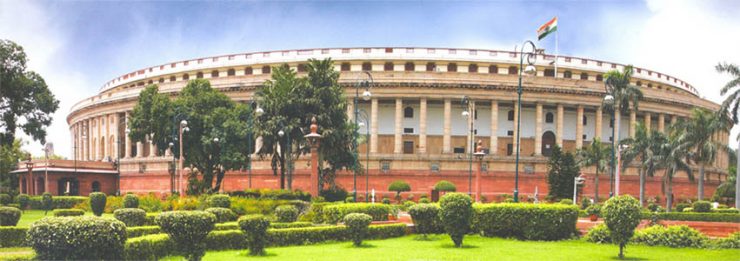
New Delhi: There has been an increase in the allocation and expenditure in respect of Indian Army in both revenue as well as capital budget over and above the previous year, a Parliamentary panel was told.
The 31-member Parliamentary Standing Committee on Defence headed by former minister Jual Oram and which also has Congress leader Rahul Gandhi as its member was told that the allocated funds are optimally and fully utilised towards operational activities. If required, the schemes are reprioritised to ensure that urgent and critical capabilities are acquired without any compromise to operational preparedness of the Army.
The revenue budget comprises of two parts, Pay & Allowances and Non-salary. Under the Pay and Allowances head, the Army made a projection of Rs 1,15,976 crore against which an allocation of Rs 1,12,525 crore was provided. The Ministry of Defence (MoD) submitted that Pay and Allowances being First Charge, the shortfall will be met at Revised Estimates (RE) stage. The Non-salary revenue projection is Rs 50,603 crore and allocation Rs 35,189 crore, accounting for a shortfall of Rs 15,414 crore.
The Non-salary revenue budget include stores, maintaining war reserves, works, transportation, Ex-servicemen Contributory Health Scheme (ECHS) and miscellaneous grants. The shortfall has been distributed based on prioritisation and critical requirements under various heads. The committee was apprised that additional funds will be required at Revised Estimates (RE) stage. The Committee was told by Defence Ministry officials that the impact of shortfall will be on stores, training, routine sustenance and maintenance of equipment and infrastructure.
The projection in capital budget was Rs 50,279 crore while the allocation was Rs 32,436 crore, which is a shortfall of Rs 17,843 crore.
The capital budget compromises of two components, capital acquisition and infrastructure. In capital budget, there is an increase of 10 per cent over last year’s Budget Estimates (BE). The budget for Capital acquisition includes modernisation against which Rs 15,959 crore have been allocated. In addition to this, an amount of Rs 4,405 crore for emergent procurement and Rs 5,705 crore for in-service replacements and upgrades by ordnance factories has been earmarked.
The impact of shortfall of capital budget include committed liabilities of Defence Public Sector Undertakings (DPSUs), new schemes for modernisation, major repairs, and non-servicing of committed liabilities for construction works. More funds for Atal tunnel will be required at later stage.
On the differences in projection and allocation of budget under various heads, a Defence Ministry official told the Committee that “there will always be a gap between our projections and the allocations. This is applicable not only to Ministry of Defence but to all government departments. Therefore, our expertise lies in marrying that differential between our projections and the allocations.
As was brought out in the presentation by the Director General Financial Planning (DGFP), we have undertaken a number of measures to bridge this gap. It affects certain domains where you are unable to spend the money. So, some of the schemes will roll over to the next financial year and that is how, we manage that but the bottom line is that we maintain our operational efficiency and that in case we are required to undertake any operational mission, we should be ready at all times to undertake that.”
On the impact of shortfall, the Committee was told that there would be constraint in IT investment in equipment and upgradation of technology, procurement of equipment, maintenance and modernisation of equipment, health facilities etc. It was also informed that any deficiency or shortfall in IT technology or laser technology can be disastrous for the armed forces and defence preparedness and at the same time, there cannot be any compromise on defence preparedness.
On indigenisation, the Committee wanted to be updated on whether any funds are dedicated exclusively for acquisition from indigenous sources. The Ministry of Defence apprised the Committee that no separate funds have been dedicated for acquisition from indigenous or foreign sources.
The Committee recommended that the Ministry of Defence shall explore possibilities of earmarking some percentage of funds while allocating annual funds for acquisition from Indian sources. This would complement the indigenisation efforts. Obviously, while doing so national security should be held paramount as such efforts would lead to self-sufficiency in the long run.








